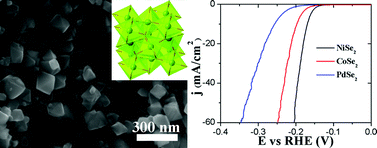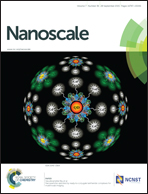Metal diselenide nanoparticles as highly active and stable electrocatalysts for the hydrogen evolution reaction†
Abstract
In this communication, nickel diselenide (NiSe2) nanoparticles are synthesized by a facile and low-cost hydrothermal method. The synthesis method can be extended to other metal diselenides as well. The electrode made of NiSe2 exhibits superior electrocatalytic activity in the hydrogen evolution reaction (HER). A low Tafel slope of 31.1 mV per decade is achieved for NiSe2, which is comparable to that of platinum (∼30 mV per decade). Moreover, the catalytic activity of NiSe2 is very stable and no obvious degradation is found even after 1000 cyclic voltammetric sweeps.


 Please wait while we load your content...
Please wait while we load your content...